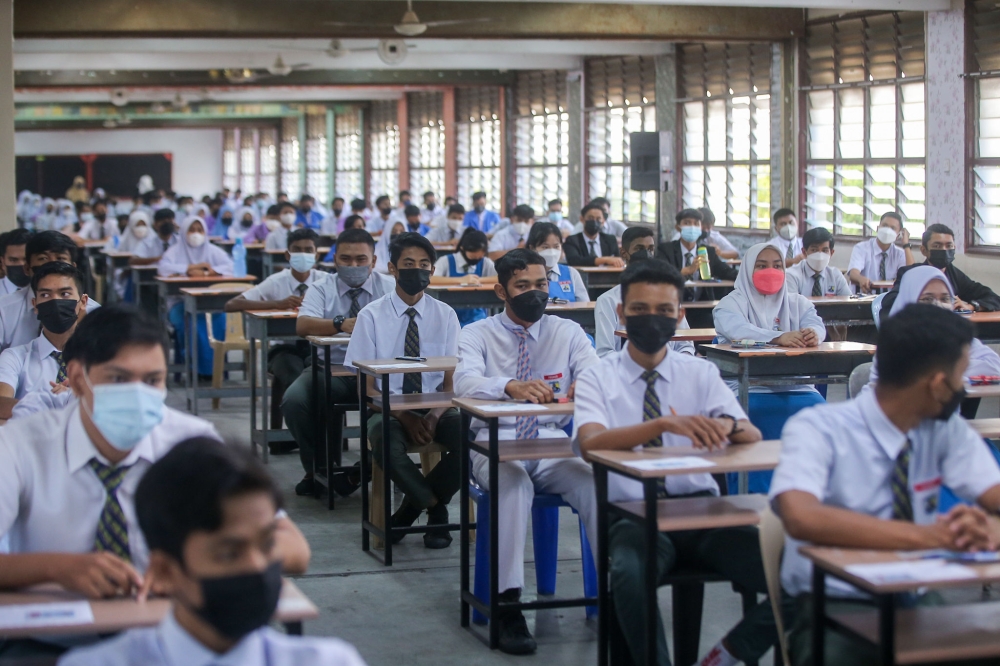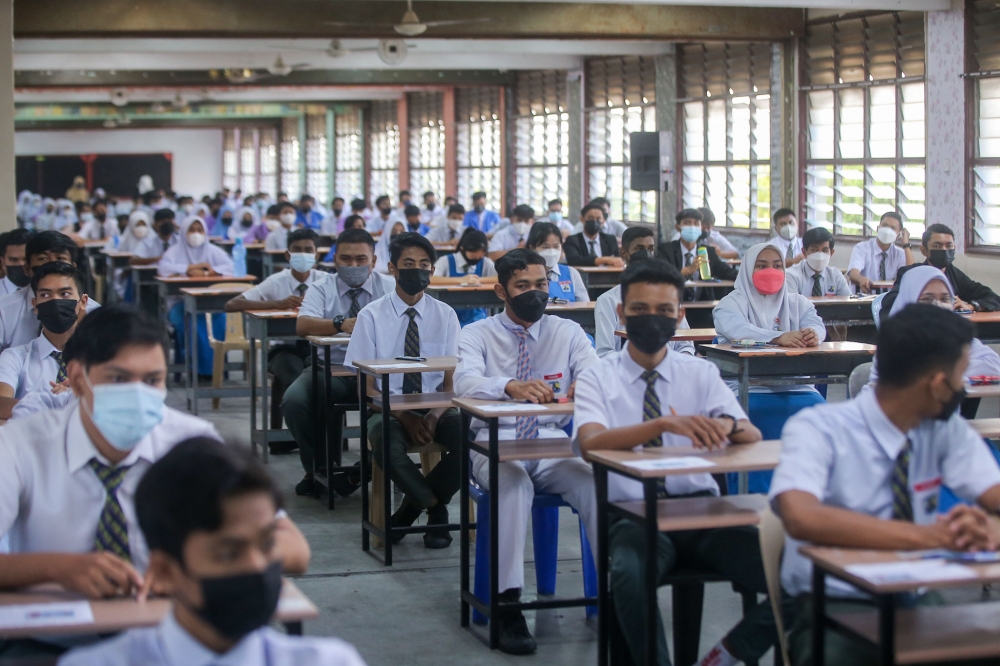AUG 14 — Let us now with thankfulness, praise Malaysia’s education heritage.
Founders: Colonialists and locals in a different era, and thereafter Malaysian education service members, both within a century turn a largely illiterate society to one which navigates cyberspace.
Education more than anything, activated us and for some actualised them.
Ground that before proceeding further since bad news about our schools cast a dark shadow. Episodes of persistent violence in boarding schools in particular, invite public scorn.
Cannot blame them, their family members are in them or perhaps in the future set to enter these institutions.
The untimely tragic death of Zara Qairina Mahathir at the age of 13 somewhat pushed an irate population over the edge.
There is no conspiracy or plan. Multiple isolated cases of harm nationwide climaxed with Zara Qairina protests.
Anger and frustration drive the expressions, especially on the Internet.
Who is at fault? They all ask. Who should be responsible?
Should the education ministry have foreseen this and devoted itself to a resolution before the body count upped past acceptable?
I want to withdraw a little from the battlefront and to the quieter periods in our schools, when normal things occur.
The student culture, because bullying is part of the education frontier.
The current conversation, a correction course, is about how much more can be done to tighten the sphere of control present in schools. Expect headmasters and teachers to overreact in the coming months.
Yet control binges only provide short-term artificial relief.
If a classroom of rancorous students is tied up, those inside that class cannot harm themselves or others. They also look a lot like residents of a mental asylum.
There is bullying in all regions of life, from team sports to the boardroom. There is probably a healthy dose of it in old folks’ homes.
In schools, it is nuclear. Because it involves children.
Parents can narrate the impossibility of raising regular kids in the modern world. The kindest mother can still tell her child’s a brat, sometimes. Because it is that time, growing up. Now, imagine thousands of brats with their attendant problems and fixations dealing with adolescence in the same compound.
The long-term solution to our troubles in the schools is not going to be the updating of our rules and regulations, nor the more rigid enforcement of them.
Teachers and headmasters facilitate learning and the love for it but they cannot micromanage the student population’s misdirected animosities. There are too many of them, students, and too few teachers.
If two parents struggle with just two kids, how not to empathise with teachers in these schools in working ratios of one of them to 20 students. The complications multiply in boarding schools — it is not merely learning hours, they live in school.
If in-school violence is the problem, silencing the student population is not the solution. It only means the problems go underground. The answer is always in student leadership.
The antidote to the prevalent bully culture in schools is to let student leadership overwhelm baser action. In plainer language, a bunch of aggressive students with attention deficit require a redirection of their energy and zeal. To lead rather than react in their community.
Leaders among students to end the violence
Student leadership would require student autonomy. Not teachers picking their favourites to round up the rest or keep an eye on them. There are prefects and various appointments for clubs and societies, presently.
In the 1980s, when I started my secondary education at the Victoria Institution what struck me hard was the student leadership culture. No, it was not rocket science.
More was expected from students to meet a responsibility threshold. Whether junior students or those in advanced years.
It was also a time when the second generation of teachers post-Merdeka were in charge. They wanted to deconstruct the old values and herald in a uniquely Malaysian flavour to school life.
By the year, there were more teachers who felt students should be subservient as part of a perceived Malaysian/Asian culture, rather than outspoken, independent and empowered.
One teacher dismantled the junior library because one school did not need two libraries, in her mind. She did not see that first and second form students continuing a tradition to manage a tidy library parallel to the senior library was conscientious behaviour. To her it was redundant.
The school band made zombies. They arrive as first formers, fidgety and easily bored, and weekly drills made the majority of them ensconced in it rather than at odds with authority inside the organisation.

Teachers and headmasters facilitate learning and the love for it but they cannot micromanage the student population’s misdirected animosities. There are too many of them, students, and too few teachers. — Picture by Farhan Najib
By school leaving year, the boys struggle to hide their disappointment that the days they can call themselves band-boys is coming to an end.
The school was alive, a hub of activities.
We ran on the field — in only blue and black shorts, thank you very much — climbed the green wall, made plans and failed over and over along the way. There were a record number of societies and initiatives.
There was hatred of the prefects, yet somehow students complied.
But things began to dwindle as co-operation from teachers and the headmaster went missing.
Student leadership was anathema to many teachers.
Was there violence? Yes, scraps. Maybe more than a few. Was there abuse, yes, of course. They were still young men, also finding their way. The deputy head boy slapped my glasses off my face when he could not deal with my serial detentions and penance submissions.
The wins were far, far more compelling than the setbacks.
What they developed was a sense of responsibility from their leadership roles.
Young people need their energies directed in healthy directions, to feel they are part of the solution. Those younger than them feel more at ease with peer-group leadership rather than the parents who turn up daily as teachers.
Where does it deal with bully culture?
The typical bully was always one good choice away from being a leader. When leadership roles are unavailable, then the loud, determined and able tend to participate in organic power structures among their cohorts.
The student leader protects those he or she leads. The bully without a vehicle but all the manic energy tends to direct his ire at his fellow students.
It can seem almost like the other side of the coin. A philosophical discourse invariably will lead us to that conclusion. The proximity between leaders and bullies.
What is not contentious, young and energetic students require pathways to lead inside their schools, or they will find their own organic paths to meaning. There is no one shoe fits all.
What is projected here is the need to have mechanisms of self-policing inside schools which are managed by students. Schools can either facilitate them or try to create docile students.
As the events of the past 40 years in our schools can testify, it is time to let students lead other students away from violence towards each other. To do that, we have to trust them. Trust their character and leadership.
The VI turns 132 years old today. Best day to talk about student leadership. Hope, Putrajaya listens.






